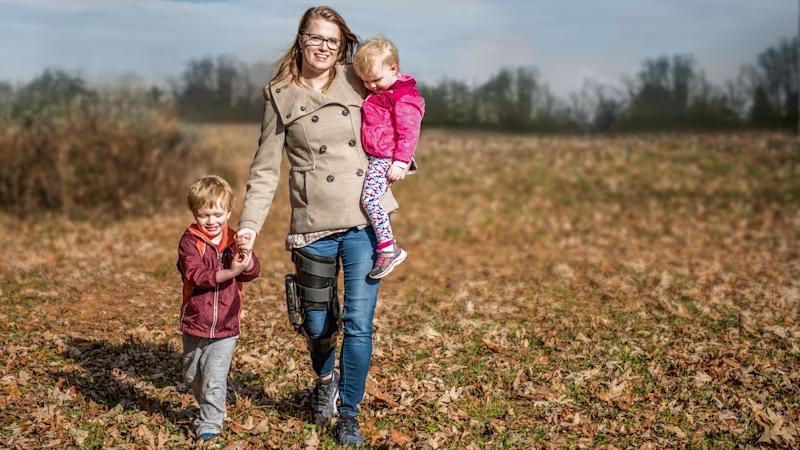Espina bífida (columna vertebral abierta)
La espina bífida (columna vertebral abierta) es una malformación en la zona de la columna vertebral y la médula espinal que se produce al inicio del embarazo. Puede resultar beneficioso un tratamiento con medios auxiliares ortopédicos como, p. ej., órtesis.
Causas, síntomas y tratamiento
La espina bífida (columna vertebral abierta) es una malformación en la zona de la columna vertebral y la médula espinal. Puesto que, en el embrión, la columna vertebral y la médula espinal se desarrollan a partir de lo que se conoce como el tubo neural, la espina bífida es un defecto del tubo neural. Tras los defectos cardíacos, los defectos del tubo neural son la segunda malformación congénita más frecuente. Se forma una espina bífida con más frecuencia en la zona de la columna lumbar y del sacro que en la zona de la columna torácica o cervical.
Existen diferentes formas y manifestaciones de la espina bífida:
Espina bífida abierta
Espina bífida oculta
Órtesis y correajes de Ottobock

Causas
Aún no se ha logrado explicar con exactitud las causas de la espina bífida. De lo que no hay lugar a dudas es de que la malformación de la columna vertebral se produce durante la tercera o cuarta semana de gestación. Esto se debe a que el tubo neural del embrión no se cierra. El tubo neural es una fase temprana en el desarrollo del sistema nervioso central. A partir de la sección inferior del tubo neural se desarrolla la médula espinal y la columna vertebral, mientras que la sección superior da lugar al cerebro y al cráneo.
Un déficit de ácido fólico (una vitamina B) o un metabolismo del ácido fólico alterado durante el embarazo se consideran la causa más importante de la espina bífida. Además, las mujeres que toman antiepilépticos durante el embarazo tienen un riesgo aproximadamente 1 % mayor de que su bebé desarrolle espina bífida.
Síntomas
Los síntomas pueden ser muy diferentes. La malformación puede afectar o no a la región de la columna vertebral y lo puede hacer en distinto grado en función de dónde se haya formado exactamente la separación. La espina bífida oculta apenas tiene síntomas. En este tipo de espina bífida, el arco vertebral está separado en dos sin que la médula espinal esté afectada. De ahí que la malformación no llegue a detectarse en muchas ocasiones. Por el contrario, una espalda abierta, donde las meninges espinales y/o la médula espinal también están implicadas en la separación, puede tener consecuencias de leves a graves. En este tipo de espina bífida conocida como espina bífida abierta, los síntomas van desde molestias apenas perceptibles a graves limitaciones como, p. ej., una paraplejia.
Terapia
El tratamiento depende de la gravedad de la malformación de la columna vertebral. En algunos casos, la variante más leve de la malformación no requiere ningún tipo de tratamiento. Por el contrario, en la espina bífida abierta puede darse un defecto claramente marcado. En estos casos se recomienda una intervención quirúrgica durante las 48 horas posteriores al parto. A fin de contrarrestar deformaciones articulares provocadas por una espina bífida, puede resultar de ayuda realizar un tratamiento compuesto por fisioterapia y el uso de medios auxiliares ortopédicos como, p. ej., órtesis.
Volver a las actividades cotidianas: 3 pasos hacia una ortesis Ottobock
- Aquí encontrará una descripción general de todos los dispositivos ortésicos y soportes que podrían ayudarle. Lleve la lista con usted a su próxima cita con el médico.
- Hable con su médico sobre qué dispositivo ortésico es el más adecuado para sus síntomas y afección. Su médico puede entonces recetarle el dispositivo ortésico adecuado.
- Lleve su receta a una compañía de ortopedia. Le darán su nueva ortésica y la ajustarán para que se ajuste a sus medidas corporales exactas.
